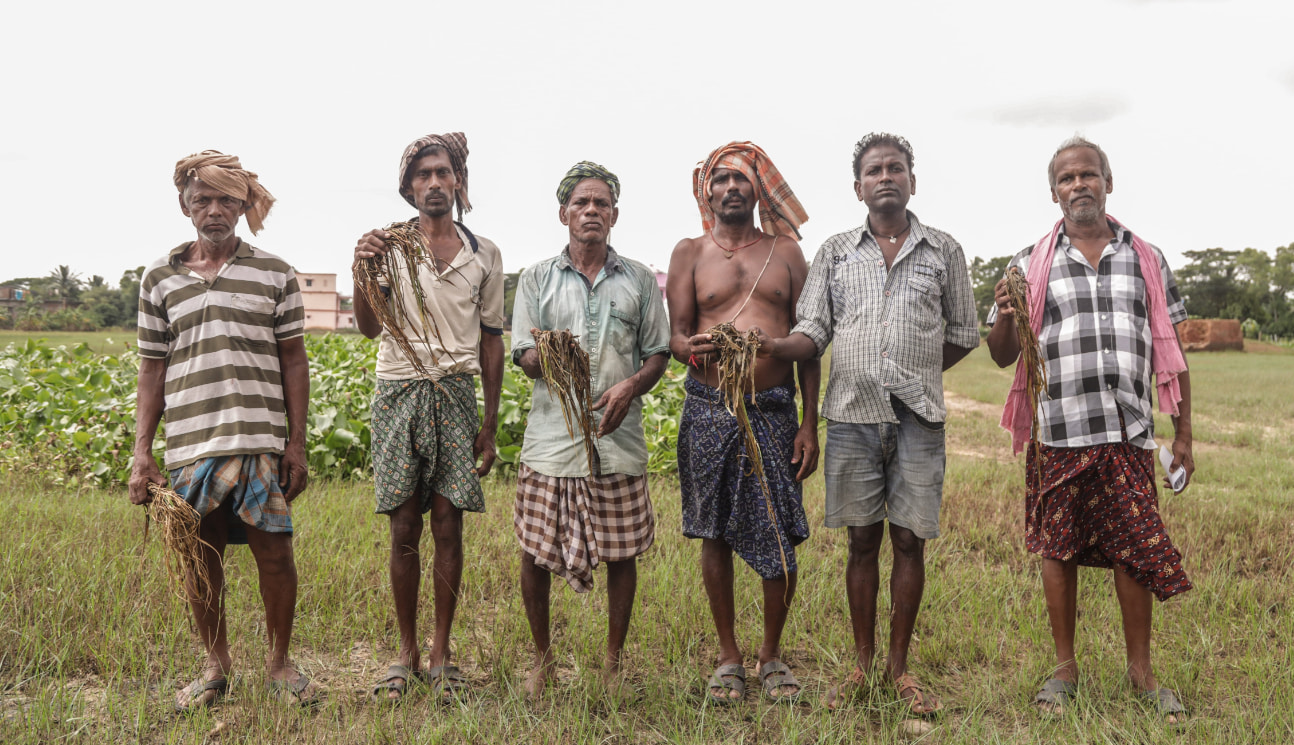



At current emission rates, countries have about 10 years before we exhaust the carbon budget to limit global temperature rise to 1.5 degrees. To avert extreme climate disasters, we require deep, sustained and rapid mitigation efforts. However, there is a growing recognition that these economy-wide transformations might severely disrupt people’s jobs and livelihoods, especially in the Global South. A carefully managed transition to clean energy, through its potential to create alternative and better quality jobs, provides us with an opportunity to alleviate these concerns. For fellow researchers in this field, this blog provides our approach to unlocking the immense potential of qualitative studies in making India’s climate transition just and equitable.
Policy framing for a just transition needs to be highly context-specific, taking into account the variations in regions’ exposure to fossil fuels. For example, in India, the coal-dominated districts of Dhanbad and Hazaribagh in Jharkhand would face significantly different livelihood challenges than the automotive hubs in Chennai, Tamil Nadu. Further, experiences from the Global North suggest that top-down policy interventions are often not sufficient to mitigate the adverse effects of the transition. Therefore, we need authentic and customised insights to be able to correctly frame the problem of just transitions before trying to solve them. Qualitative on-ground research, with its ability to unravel people’s social realities – their struggles, motivations, and differences in power dynamics – can help stakeholders comprehend these inequities and grasp people’s aspirations from a just energy transition.
Based on our recent experiences from mapping communities’ socio-economic dependencies on a thermal power plant, here are five ways in which qualitative surveys can be better used to capture both the complexities of just transitions and citizen-centric measures.

Identifying vulnerable communities and decoding mechanisms behind current inequities precedes any successful policy intervention | Photo: CEEW
First, desk research and pre-pilot study are imperative prerequisites. Literature review is your homework to educate yourself on the pre-existing knowledge and identify information gaps. This might also include a quick review of ground reports to bring yourself up to date with the local context. We followed this up with a pre-pilot visit to recce the study site, validate our desk knowledge, and inform the questionnaire design. It helped us to conduct a geospatial mapping of the region to gauge the area and identify clusters of importance for our research.
Second, questionnaire is the holy grail. The robustness of one’s survey is dependent on the quality of the questionnaire. By design, quality questionnaires are made to prevent respondent fatigue, yet exhaustive to meet the study priorities. They use simple language to avoid ambiguity, pose open-ended questions to allow respondents to lead the conversation, and deploy probes to stimulate their memory and derive specific insights. To elicit candid responses on sensitive issues – a common challenge in survey-based studies – our approach was to probe into the respondent’s knowledge of others, instead of themselves. For example, there was hesitation among the respondents in sharing their grievances with their current job due to fear of the employer’s backlash. We were successful in gaining elaborate responses by modifying the question to instead inquire about the grievances of other employees and probing their willingness to recommend their job to others.
Third, develop a relationship of trust with your respondents. Forging trust and connection is another way of evoking detailed responses. However, achieving it within a few minutes of the meeting is hard. Since you’ll be non-native to the survey area, the respondents will be inquisitive about your credentials, survey objectives, and how you will be maintaining the anonymity of their responses. Leading with a concise introduction about our organisation, study objectives and the rationale for talking to them helped us mitigate their discomfort during our interviews. Building familiarity with similar experiences with cities, cinema, and kinships were other benign ways in which we connected with our respondents during the interview.
Fourth, the synchrony of a note-taker and interviewer. To keep our interviews conversational, we decided to do them in pairs, with one person asking the questions while the other took notes. As the discussion is respondent-led and might not always flow in the same order as ideated in the questionnaire, it is likely that the interviewer might miss out on certain important questions while trying to navigate through the maze of the conversation. Therefore, in addition to noting down key points and pencilling in quotations that can provide a vicarious experience for those reading them, the note-taker can step in to cover any residual questions or missed follow-ups.
Fifth, debriefing as a daily ritual. Team-wide debriefs are a must for recognising the evolving narratives, modifying questionnaires in response to emerging on-field challenges, and taking strategic decisions on data saturation. However, charged with information overflow, these sessions can quickly drift apart from the stated objectives. In our case, using an analysis framework – themes and sub-themes of inquiry at the core of the study objective – helped us keep them structured and focused.
We believe that research on identifying the vulnerable communities and decoding social and political mechanisms responsible for current inequities would precede any successful policy interventions in achieving a just transition of not only our energy, but also mobility, cooling, and food systems. Qualitative study methods can help us capture these efficiently. We hope that our learnings and experiences will help future researchers in conducting more rigorous and meaningful field studies.
Tarun Mehta and Muskaan Malhotra are Research Analysts at the Council of Energy, Environment and Water (CEEW), an independent, not-for-profit research organisation. Send your comments to [email protected]
1Data saturation occurs when interviewing additional participants from the same respondent category would not bring out additional themes, ideas, or opinions. It’s one of the most important determinants of sample size in qualitative surveys.



Add new comment